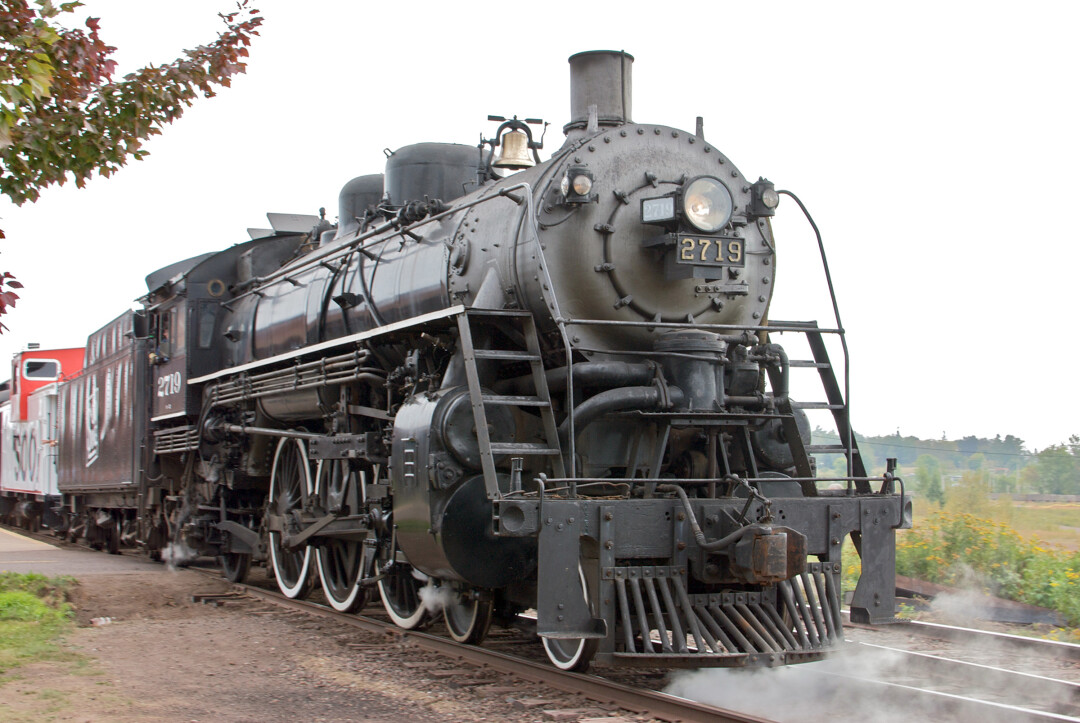Gaining Steam: Fundraising begins to bring historic Soo Line engine back to Eau Claire

An effort to raise funds to relocate and display a historic steam engine in Eau Claire has been launched, and the city will soon learn what it will cost to make the first major step in that effort.
The Soo Line 2719 steam engine – which was displayed in Carson Park from 1960 to 1996 – has spent the last decade at the Lake Superior Railroad Museum in Duluth, Minnesota. Earlier this summer, the City of Eau Claire exercised its option to purchase the locomotive from the museum for $4. Now, the city and Visit Eau Claire, the regional tourism promotion agency, are raising funds for the project under the umbrella of a new group, Friends of 2719. The first major donation is a crucial one: Jack Kaiser, owner of Banbury Place, has arranged for free storage of the locomotive indoors by one of his Banbury Place tenants, Central Storage and Warehouse.
We see it completely as a tourism initiative." – Linda John, Visit Eau Claire, on bringing the Soo Line 2719 back to Eau Claire
The next step will be moving the locomotive to Eau Claire, which could cost anywhere from $36,000 to $100,000, City Manager Dale Peters said at a Sept. 5 public forum. The actual cost will become more clear after the city receives bids, which are due Sept. 28, Peters said.
“Nothing has been set or determined other than we own (the engine) right now,” he added.
Eau Claire City Councilman Dave Strobel said that while there is not deadline for moving the locomotive, he would like to have it done by the end of the year. While the Lake Superior Railroad Museum has said it will charge the city $100 per day for storing the engine, Strobel labeled this a “scare tactic.” Peters said the city hasn’t received an invoice for the storage fee.
Because of its size, the 95-year-old locomotive must be moved by rail, a tricky and expensive proposition. After it has been relocated, a suitable site must be found to put it on display, and a structure must be built to protect the engine from the elements.
City Councilman Jeremy Gragert described five possible sites for the engine, which were identified by City Engineer Dave Solberg:
A triangular piece of city-owned land on the west side where Cameron and Madison streets meet.
Along Forest Street, near the Chippewa River and the community garden.
In the so-called “Railroad Lot,” which is bordered by Farwell and Barstow streets, across from the entrance to Phoenix Park.
On the south side of Galloway Street just beyond Banbury Place, next to a proposed street overpass.
On the south side of Galloway Street near where the “S” bridge crosses the Eau Claire River.
Wherever the engine would be placed, it would need a shelter. Eau Claire architect and railroad enthusiast Bill Anderson shared his preliminary design for such a structure: a 119-foot-long, 32-foot-wide shelter topped with a steel roof and surrounded by a fence that could be opened for visitors.
“It’s got to be a public setting and it’s got to be a place where people want to go,” Anderson explained.
Before anything can happen with the engine, however, funds must be raised. The Friends of the 2719 website is soliciting donations as well as seeking volunteers willing to serve on subcommittees to help with the project.
“We see it completely as a tourism initiative,” Linda John, executive director of Visit Eau Claire, said of the returning the locomotive to Eau Claire. Searches for trains and train travel are among the most popular on tourism websites, and bringing the train to town would boost the city as a tourism destination, she said. Trains, she added, generate nostalgia and are strong draws for families.
The proposal to bring the 2719 to Eau Claire drew a mixed reaction from members of the public at the meeting. While some were excited for the opportunity to see the engine once again on display in the city, others set it would be better to leave it in the hands of the Lake Superior Railroad Museum, which for years used it to pull excursion trains. Advocates say the engine is still in good condition, but it needs a costly inspection of its boiler to be certified to run on the rails again. This boiler work has been put on hold because of uncertainly over the engine’s future, said David Peterson, an Eau Claire railroad enthusiast.
Peterson and others said because the engine should remain in Duluth because it’s unlikely to ever be used again if brought to Eau Claire. “Personally, to stuff and mount an engine again is something that should not be done,” Peterson said.
Strobel, the City Council member, said it wasn’t his intention to let the engine “sit and rot” once it got to Eau Claire. Stroebel acknowledged that it might not be possible to operate the engine on the rails around the city at present, but that it might be possible in the future. Potential display locations are located near rail lines, Strobel added. “If we get passenger service and in the future if our citizens have the opportunity once again to run that train nearby, it will be relatively easy to get it back on the tracks,” he said.
To learn more about the potential return of Soo Line 2719 to Eau Claire, or to make a donation toward the project, visit friendsof2719.com.






















